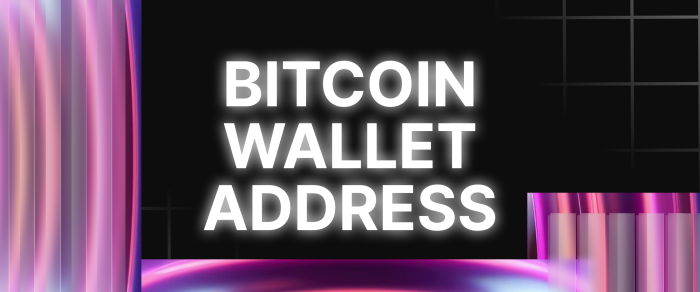How is a Bitcoin Wallet Address Created?
Imagine writing a letter without the other person’s address — it would never arrive. In a decentralized world of money, your Bitcoin wallet address is your one-of-a-kind identifier, a kind of ZIP code. Except instead of streets and ZIPs, it’s constructed out of math, unpredictability, and military-level encryption.
This guide provides a piece-by-piece breakdown of the Bitcoin wallet address creation process. We will examine the core cryptographic engine, explore the various types of available wallets, and discuss the security practices necessary to protect your assets.
Key Takeaways
- A Bitcoin wallet address is created from a private key through public-key cryptography and a series of one-way hash functions.
- Different wallet types—software, hardware, web, and mobile—offer distinct trade-offs between everyday convenience and overall security.
- Protecting crypto assets from loss depends on two critical factors: secure backups of your seed phrase and using trusted wallet software.
What Is a Bitcoin Wallet Address?
Put simply, a Bitcoin wallet address is the information you give someone so they can pay you in Bitcoin.
It’s a unique string of 26 to 35 letters and numbers that acts as a public destination for funds. The key here is the word public. You can post it, share it, and send it to anyone without a shred of risk.
Making a similar kind of analogy, you can also think of your own username on blockchain — when you are supposed to receive money in Bitcoin, others will use this address to complete the payment.
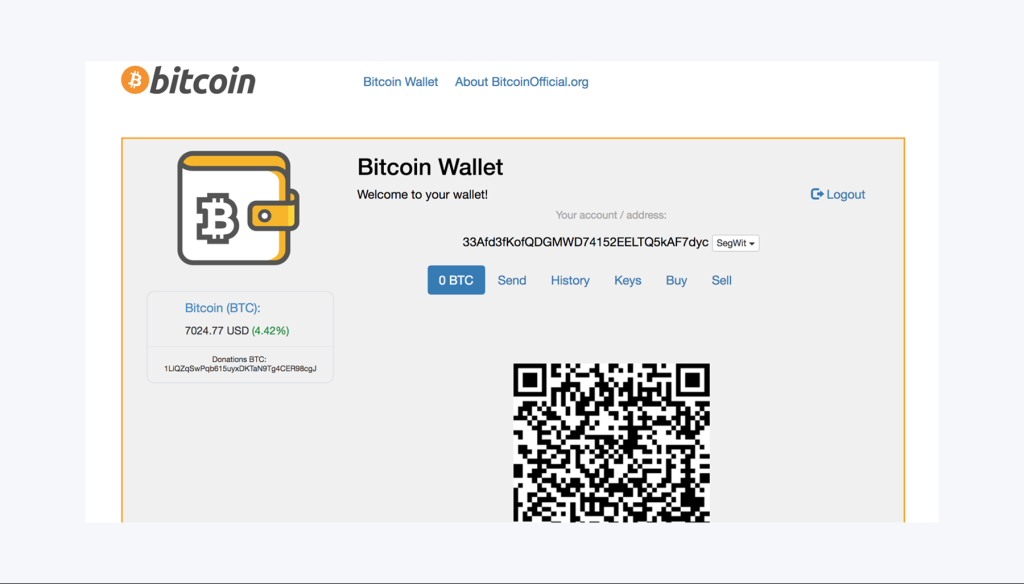
A classic Bitcoin wallet address example looks like this:
1A1zP1eP5QGefi2DMPTfTL5SLmv7DivfNa
You’ll see a few address formats in the wild:
- Legacy (1…): The original format. It works, but it’s the least efficient.
- P2SH (3…): An intermediate step that enabled more complex features like wallets requiring multiple signatures.
- SegWit (bc1…): The modern standard. Using these addresses is smarter because they are more efficient, which translates directly into lower transaction fees for you.
The real magic, and the core of Bitcoin’s security, is the relationship this public address has with its twin: the private key. It’s the one piece of information that can sign transactions and move funds. Whoever holds the key controls the bitcoin; make no mistake: this key must remain an absolute secret.
Modern Hierarchical Deterministic (HD) wallets are a game-changer for privacy. They automatically generate a brand-new address for every single transaction you receive. It makes it incredibly difficult for outsiders to connect the dots and track your financial activity across the blockchain.
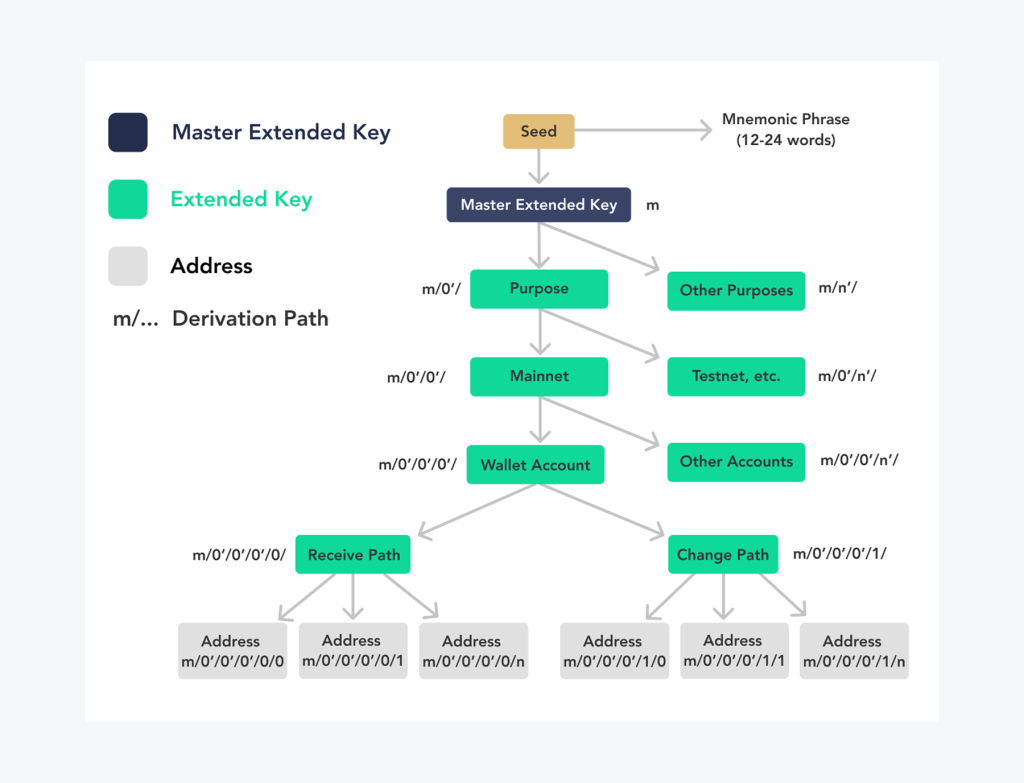
Fast Fact
A single Bitcoin private key has more possible combinations than the number of atoms in the observable universe — making brute-force hacks virtually impossible.
Types of Bitcoin Wallets
If you’re new to crypto, you’ll realize not all Bitcoin wallets are made equal. The type of wallet you choose dictates everything about how your keys are stored and how you access your funds.
Software Wallets (Hot Wallets)
The software wallet is a downloadable application or program for your smartphone or computer. These wallets are popular among new users as they are free, available at any time, and ideal for day-to-day cryptocurrency transactions.
This wallet allows you to instantly generate a new Bitcoin address and share it with others.
You can learn how to find Bitcoin wallet address in your app control panel quickly—most have a quickly accessible and easily shareable QR code. Because software purses access the internet, however, you have to worry about hacking. And you’ll therefore want to protect your wallet app’s backup phrases and private keys.
Hardware Wallets (Cold Wallets)
For seasoned buyers and holders of substantial amounts of cryptocurrency assets, a hardware wallet represents the gold standard in security. These are physical devices—i.e., USB drives—that retain your private keys offline. As these devices never go online, your crypto wallet address and its corresponding private key reside in a malware- and phishing-attack-immune environment.
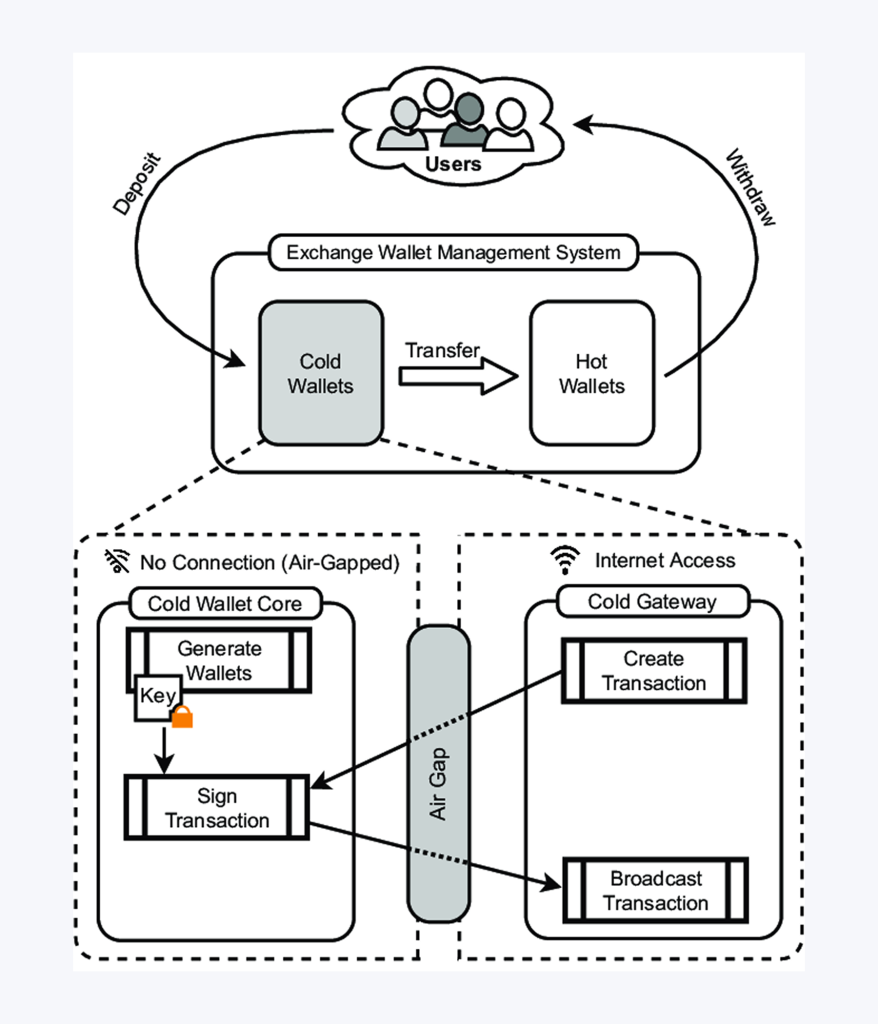
You can create a new address, view your public wallet address, and manage Bitcoin transactions securely with software when you link your hardware wallet. Most of these also prompt you with the correct wallet address on the device’s screen before you verify a transaction.
Though slower for everyday use, no other option can compare with their control and comfort, especially when saving addresses on the blockchain network for the longer term.
Web Wallets
Browser wallets are in-browser products offered by exchanges or custodian firms. While they’re extremely simple to use by beginners and instantly send and receive cryptocurrency with minimal hassle, your public and private keys are usually stored by the firm, rather than you. Essentially, you’re entrusting someone else with your money and access to your wallet address.
If you do this, make sure that the site is well-encrypted and that 2FA (two-factor auth) is enabled. Note, however, that if the exchange itself becomes compromised, your wallet and crypto funds could become at risk.
Mobile Wallets
These are software wallets designed exclusively for smartphones. Consider them a digital wallet you carry around with you. These allow you to use a QR code to request or send money and typically feature beneficial functionalities, such as alerts, price notifications, and automatic address generation.

They’re best suited for casual users who want a convenient way to manage their Bitcoin addresses on their smartphones. Be sure, though, to use a good passcode and store your wallet in case your phone is lost or stolen.
Paper Wallets
A paper wallet is an old-school method in which you print your public key (i.e., your Bitcoin wallet address) and private key on a piece of paper.
Paper can be readily lost, destroyed, or stolen, and you cannot recover it if that happens. Additionally, wallet programs and blockchain purses nowadays utilize more sophisticated and secure key storage systems, rendering paper purses obsolete, except for ultra-niche uses.
How a Bitcoin Wallet Address Is Created Step-by-Step?
Creating a Bitcoin wallet address may seem like cryptographic wizardry, but it’s a beautifully logical process powered by advanced cryptography.
- Private Key Generation
The process begins with a private key, which is a randomly generated number. Don’t let the term “random” fool you, though — this is usually a 256-bit key, so you’ve got more than 10⁷⁷ possible combinations. More than are found in the known universe’s inventory of atoms.
Someone can’t guess your key by its size and its lack of pattern. This private key is the root of your entire wallet — anyone who has access to it controls the money.

- Public Key Derivation Using ECDSA
Once you’ve created your own private key, your wallet automatically creates a public key using ECDSA, a one-way form of cryptographic technology.
This implies that your wallet can easily derive a public key from your own private key, although no other person can reverse-engineer their way to determining your private key.
This public key will then be used to create your real Bitcoin wallet address.
- The First Hash (SHA-256)
Your public key is then hashed by using the SHA-256 hashing algorithm. This function takes in inputs and produces a 256-bit constant-size “fingerprint” of the information. A slight variation in input yields a completely different output. This takes your public key and compresses it into a secure, irreversible form.
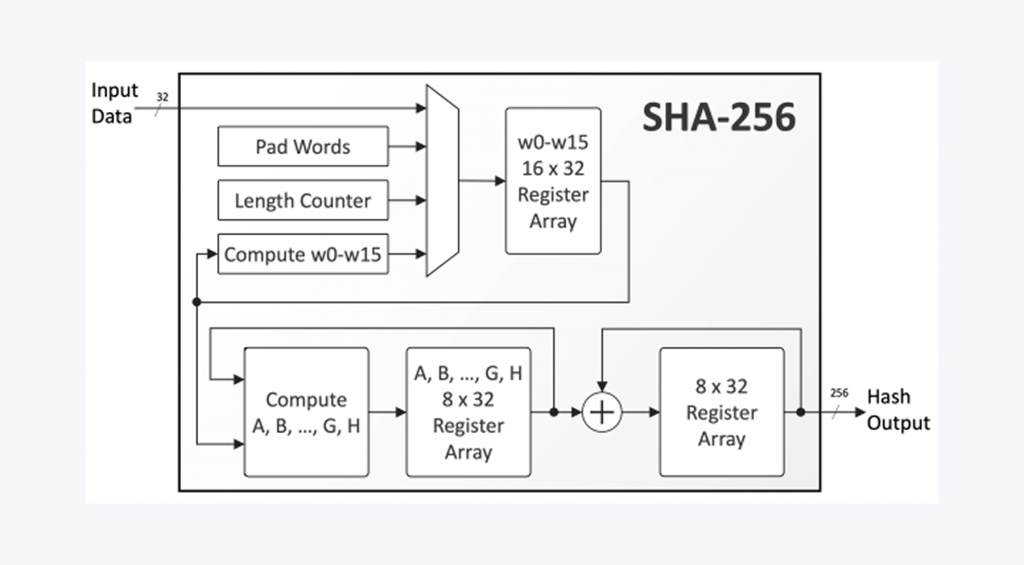
- The Second Hash (RIPEMD-160)
The SHA-256 hash, while secure, is still quite long for practical use. To make it more manageable, it undergoes a second round of hashing using a different algorithm: RIPEMD-160. This process further shortens the data. The resulting, more compact piece of information is known as the public key hash. It is essentially a shorter, secure representation of your full public key.

- Adding the Version Byte
An address must signal which network it belongs to, such as Bitcoin’s mainnet or a testnet. This is done by adding a simple prefix called a “version byte” to the start of the public key hash. For the main Bitcoin network, this is typically the 0x00 byte. This piece of data acts as a simple tag that instructs the network on how to handle the address.
- Creating the Checksum with Double SHA-256
Because cryptocurrency transactions cannot be reversed, a single typo can lead to a permanent loss of funds. To mitigate this risk, a checksum is built into every address to detect errors. The creation process is specific: the versioned public key hash is run through the SHA-256 algorithm twice. Only the first 4 bytes of the final hash result are taken. This small piece of data becomes the address’s verifiable checksum.
- Adding the Checksum
This 4-byte checksum is then attached to the end of the versioned public key hash. This creates a final data string containing the network version, public key hash, and the error-checking code. At this point, the data is complete but remains in a machine-readable format that is not user-friendly.
- Final Encoding (Base58Check)
The last step converts this data string into a human-readable format using an encoding scheme called Base58Check. This format was designed specifically to reduce human transcription errors. It accomplishes this by removing characters that look visually similar, such as ‘0’ and ‘O’, or ‘l’ and ‘I’.
The result of this encoding is the standard Bitcoin address format (1A1zP1eP5QGefi2DMPTfTL5SLmv7DivfNa). This is the final address that can be shared publicly to securely receive funds.
Security Advice When Creating a Wallet Address
Creating a Bitcoin wallet address is how you begin having crypto — but doing so in a secure manner is what actually protects your funds.
While most wallet apps or websites make creating a wallet address as easy as pie, there’s high-end cryptography at work in the background. And if that process isn’t done properly or securely, your crypto assets could become a target for theft or loss.
These are some real-world, practical do’s and don’ts on how you can stay secure while creating your wallet address.
Utilize Credible Software or Hardware Wallets
To construct a wallet address for Bitcoins, choosing a good tool is your first concern. If you’re using a third-party wallet software, ensure it comes from a well-recognized, reputable source.
Never download wallet software from untrustworthy websites or black markets. Utilize well-respected players in the crypto space — preferably independently security-audited open-source wallets. Hardware wallets such as Ledger or Trezor are further secure as these generate and store your private keys offline and never move them to the internet.
Avoid Online Wallet Generators Unless Fully Verified
Websites’ Bitcoin address generators may look useful, but many have some real dangers attached. When you visit a site at random to build yourself a new Bitcoin address, you can’t guarantee that the experience is either secure or private. Those websites may well be storing your information — and your private keys — behind your back.
If you have no other choice but to use an online tool, consider using an open-source tool that is also available for offline use from a local file. Nevertheless, use wallet software offline or a hardware wallet instead. Please note that anyone with access to your private key can access your funds, regardless of how secure the wallet address appears.
Backup Your Wallet and Seed Phrase Safely
No matter how good a wallet you may have, it won’t be of any use if you don’t have a good backup. This is where seed phrases come into play. Current crypto wallets are designed to comply with industry standards, such as BIP39 or BIP44, and these seed phrases form a 12- or 24-word recovery phrase during wallet creation. It’s essentially a human-readable representation of your private key, and this is your rescuer if you lose your phone, device, or credentials for access.
You should never store your seed phrase digitally. This includes taking screenshots, saving it in emails, or uploading it to cloud storage. The correct procedure is to record the phrase on a physical medium, like paper, and keep it in a secure, offline location. Some users even etch their phrase onto metal for better protection against fire or water damage.
Conclusion
Your Bitcoin wallet address is just another piece of digital data. Still, now you know it’s the final product of layers of encryption, mathematical precision, and security best practices. It’s not just a random string — it’s your identity on the blockchain network, your access point to the world of decentralized finance, and your safeguard in a borderless economy.
FAQ
Can I have more than one Bitcoin wallet address?
Yes. Most modern wallets automatically create a new address for each transaction using HD (Hierarchical Deterministic) technology.
Is my Bitcoin wallet address permanent?
It can be reused, but privacy should generate a new address each time you receive Bitcoin.
Can someone steal my funds by knowing my wallet address?
No — your wallet address is public. Only your private key can unlock or move your funds.
Where do I find my Bitcoin wallet address?
Open your wallet app or platform. Most show your current address and provide a QR code for quick sharing.
